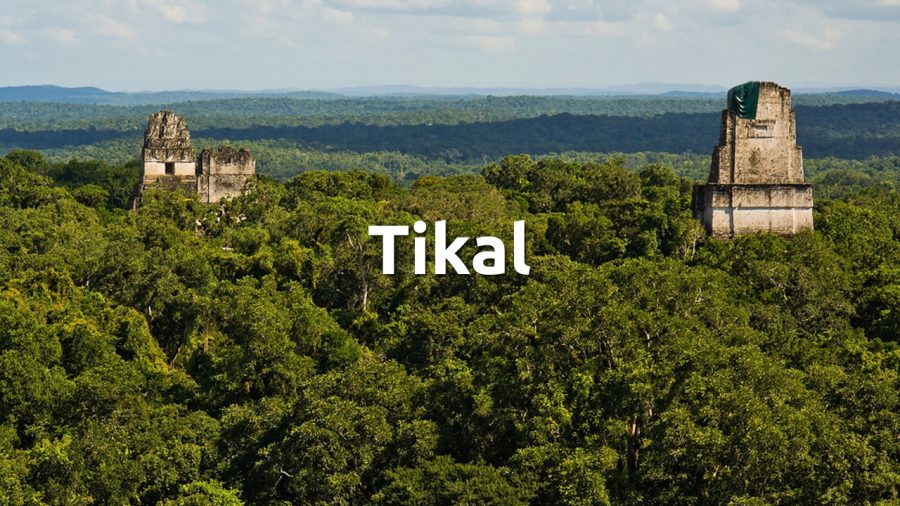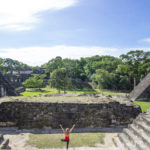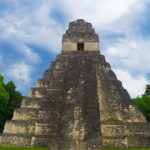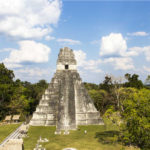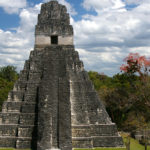Tikal is an ancient Mayan citadel in the rainforests of northern Guatemala. Possibly dating to the 1st century A.D., Tikal flourished between 200 and 850 A.D. and was later abandoned. he central part of the ancient city alone contains 3,000 buildings and covers about 16 square kilometers. Tikal is also part of the one-million-hectare Maya Biosphere Reserve created in 1990 to protect the dense forests of the Peten, which started to disappear at an alarming rate due to population pressures, illegal logging and slash-and-burn agricultural practices. Tikal’s great stone monuments languished for centuries and were gradually reclaimed by the jungle. Hernan Cortes, the conqueror of Mexico, and his motley band of conquistadors marched by Tikal in 1525, but they failed to see its temples concealed by 40-metre-tall silk, cotton, cedar and mahogany trees.
In 1958, archeologists discovered the tomb of Ah Cacau, one of Tikal’s greatest rulers, inside Temple I. Ah Cacau’s skeleton was festooned with jade ornaments and surrounded by precious offerings, including pottery, alabaster, sea shells and pearls from the Caribbean coast. You can see a replica of this elaborate tomb in the Tikal Museum near the visitors’ centre. Temple I has yielded other treasures, including intricately carved wooden lintels over its doors, which have furnished clues to Maya beliefs and cosmology. Called Temple of the Masks because of huge stone masks guarding its stairway, Temple II is almost as tall as Temple I, but safer to climb. Its summit offers travel-poster views of the Great Plaza and two labyrinthine ceremonial and residential complexes named the North Acropolis and the Central Acropolis.
Most famous pyramids of Tikal
- Tikal temple l
- Tikal temple IV
- Tikal temple ll
- Mundo perdido Tikal
- North Acropolis, Tikal
- Siete templos
- Acropolis Central
Tikal is the perfect place to enjoy a private tour and know about the Mayan ruins in Guatemala

